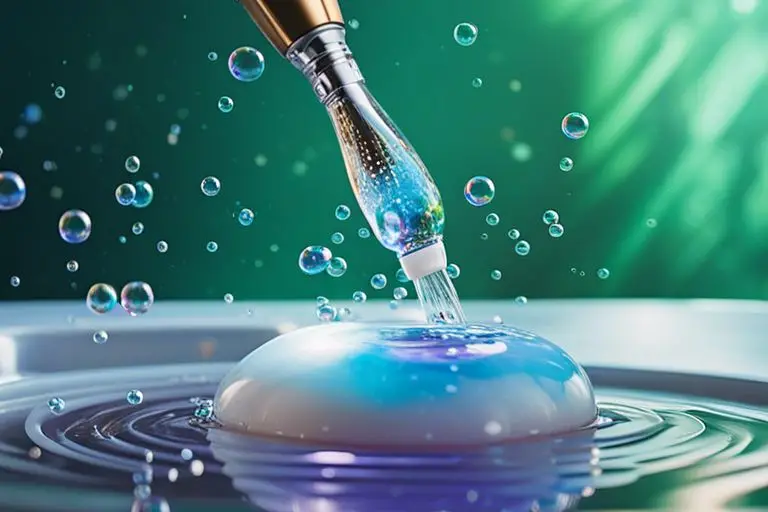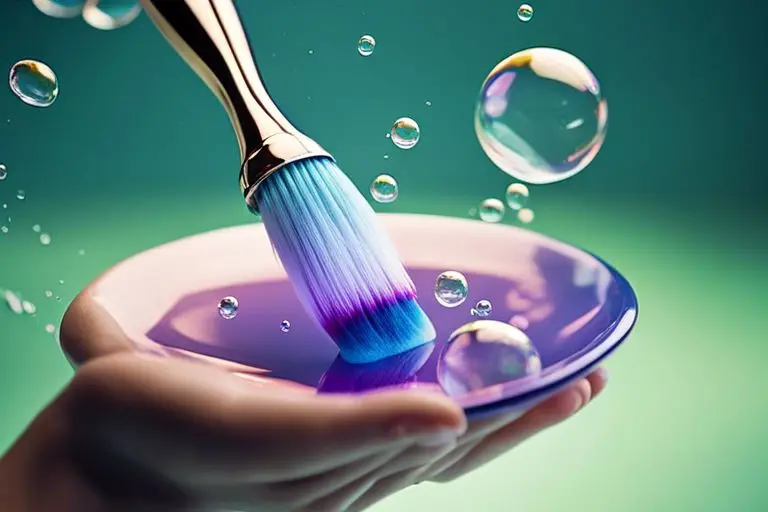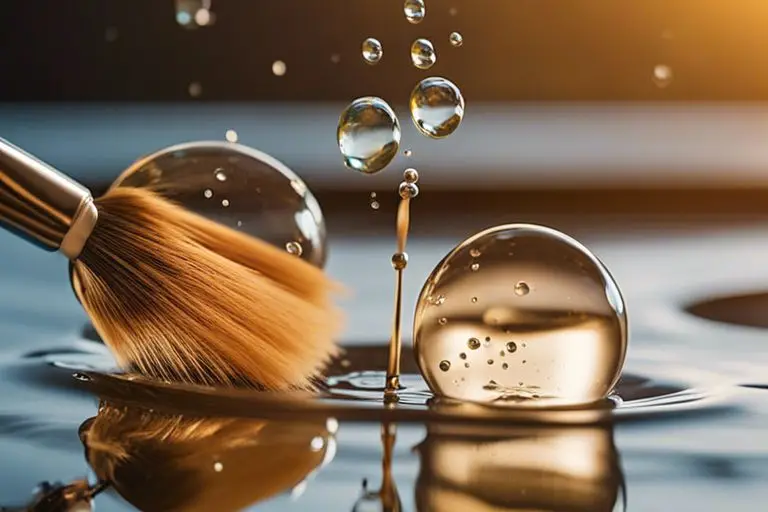This comprehensive guide will walk you through the step-by-step process of properly cleaning your paint brushes, ensuring they stay in prime condition for future use. Neglecting to thoroughly clean your paint brushes can lead to permanent damage and render them ineffective for your next painting project. Follow these vital tips and tricks to maintain the quality of your paint brushes and make them last for a long time.

Key Takeaways:
- Use the right solvent: Choose the appropriate solvent based on the type of paint used – water-based or oil-based.
- Clean immediately after use: Avoid letting paint dry on the bristles by cleaning your brushes promptly after each use.
- Soak brushes: Soak brushes in the recommended solvent for a few hours to help break down the paint residue.
- Use a brush comb: Gently comb through the bristles to remove any remaining paint and residue.
- Rinse thoroughly: Rinse the brush under warm water until clean, shaping the bristles back into their original form.
- Dry properly: Hang the brush upside down or lay flat to dry, ensuring the bristles are not bent or misshapen.
- Store properly: Once dry, store brushes in a cool, dry place to prevent damage and maintain their shape for future use.
Preparatory Steps for Brush Cleaning
Even the most skilled painters must pay attention to properly cleaning their brushes to maintain their quality over time. If you’re wondering about the correct way to clean your brush, you can find useful tips on Whats the correct way to clean your brush? : r/Warhammer.
Selecting the Appropriate Cleaner
To ensure effective cleaning, it is vital to choose the right cleaner for your specific type of paint. Some cleaners are specially formulated for acrylic paints, while others work better with oil-based paints. Make sure to read the labels carefully and select a cleaner that is best suited for the type of paint you are using.
Pre-cleaning Measures
For optimal results, it is vital to take pre-cleaning measures before starting the actual cleaning process. This can include wiping off excess paint on a paper towel, gently combing through the bristles with a brush comb, or soaking the brush in a suitable cleaner for a few minutes. Taking these extra steps can significantly improve the effectiveness of the cleaning process.
For instance, removing excess paint before cleaning can prevent it from drying and hardening in the bristles, making it easier to clean later on. Gently combing through the bristles helps to loosen any dried paint and debris, ensuring a more thorough clean. Soaking the brush in a cleaner can help soften stubborn paint residues, making them easier to remove during the cleaning process.

How-To: Cleaning Techniques
For Water-Based Paints
Cleaning water-based paint brushes is relatively straightforward. Start by thoroughly rinsing the brush under warm water to remove excess paint. Then, use a mild soap or brush cleaner to gently lather the bristles, working the product in with your fingers. Rinse and repeat until the water runs clear. Finally, reshape the bristles and allow the brush to air dry completely before storing.
For Oil-Based Paints
Some artists and DIY enthusiasts prefer oil-based paints for their durability and vibrant colors. However, cleaning oil-based paint brushes requires a bit more effort. Start by wiping off excess paint on a paper towel. Then, dip the brush in a solvent such as mineral spirits or paint thinner and swirl it around to loosen up the remaining paint. Repeat this process until the brush is clean. Remember to properly dispose of the solvent according to local regulations.
The key to cleaning oil-based paint brushes is to use the right solvent and technique. It’s important to note that solvents used for oil-based paints can be toxic if not handled properly. Always work in a well-ventilated area and wear protective gloves and a mask to prevent inhalation of fumes.

Tips for Maintaining Brush Integrity
After cleaning your paint brushes properly, it is crucial to follow certain practices to maintain their integrity and keep them in excellent working condition. Here are some tips to help you ensure your brushes last longer:
- Always reshape your bristles after cleaning to maintain their original form and prevent splaying.
- Store your brushes upright or hanging to allow them to air dry completely and prevent moisture buildup.
- Use protective caps or covers to shield the bristles from damage when not in use.
Perceiving How to Clean Paint Brushes and Rollers to Last Longer is a crucial step in maintaining your painting tools and ensuring their longevity.
Drying and Storage Tips
For optimal brush performance, make sure to dry them properly after each use. Shake off excess water and gently press the bristles between a clean cloth to remove remaining moisture. Store the brushes in a cool, dry place away from direct sunlight and extreme temperatures to prevent damage.
- Avoid storing brushes in a sealed container or plastic bag, as this can trap moisture and lead to mold growth.
- Hang your brushes bristle side down to maintain their shape and prevent deformation.
- Inspect your brushes regularly for any signs of wear or damage, and address issues promptly to prevent further deterioration.
This will help maintain the quality of your brushes and ensure they are ready for use whenever you need them.
Long-Term Maintenance Factors
For brushes to last a long time, it’s crucial to consider factors beyond just how you clean and store them. Long-term maintenance is crucial in preserving the quality of your painting tools for years to come.
- Rotate your brushes regularly to distribute wear and tear evenly across all your tools.
- Invest in high-quality brushes to ensure durability and longevity in your painting projects.
- Properly clean and maintain your brushes even during periods of non-use to prevent dried paint buildup and bristle damage.
Assume that implementing these long-term maintenance factors will help you get the most out of your brushes and maintain their performance over time.
Understanding the Importance of Long-Term Maintenance
Regular maintenance practices are crucial in preserving the quality and performance of your paint brushes. By investing time and effort in caring for your brushes, you ensure that they remain effective tools for your painting projects. Neglecting proper maintenance can lead to bristle damage, decreased paint application quality, and ultimately, the need for frequent brush replacements. By following a consistent maintenance routine and being mindful of how you store, clean, and use your brushes, you can extend their lifespan and save money in the long run.
Advanced Methods
Despite many brushes being cleaned with regular methods, there are times when advanced techniques are needed to maintain their quality. For a comprehensive guide on proper brush cleaning, refer to How to Clean Paint Brushes the Right Way.
- Deep Cleaning TechniquesMethods that fall under deep cleaning involve more intensive processes to remove dried paint and debris from the brush bristles. It may include soaking the brush in a solvent or using a brush comb to loosen stubborn paint particles.
- Restoring Damaged BrushesThe process of restoring damaged brushes can vary depending on the extent of the damage. For instance, if the bristles are matted or misshapen, using a brush restorer solution and reshaping the bristles can help revive the brush’s original form. It is important to assess the brush’s condition and apply the necessary restoration techniques to ensure its longevity.
Conclusion
On the whole, cleaning paint brushes properly is important to extend their lifespan and ensure a smooth and flawless application of paint. By using the appropriate cleaning agents, following the right techniques, and adequately drying the brushes, you can maintain their quality and avoid wastage. Remember to clean brushes immediately after use to prevent paint from drying and hardening, as well as to avoid damaging the bristles. Regular maintenance and proper cleaning will not only save you money but also improve the overall outcome of your painting projects.
FAQ
Q: Why is it important to properly clean paint brushes?
A: Properly cleaning paint brushes helps to maintain their quality, prolong their lifespan, and ensures optimal paint application for future use.
Q: What materials do I need to clean paint brushes?
A: You will need a solvent or cleaner suitable for the type of paint used, warm water, mild soap, a brush comb or wire brush, and a container for soaking.
Q: How do I clean a paint brush used with water-based paints?
A: Dip the brush in warm, soapy water and gently work the bristles to remove paint residue. Rinse and repeat until the brush is clean.
Q: How do I clean a paint brush used with oil-based paints?
A: Use a paint thinner or appropriate solvent to clean the brush. Follow the manufacturer’s instructions for disposal of used solvents.
Q: How often should I clean my paint brushes?
A: It is recommended to clean paint brushes immediately after use to prevent paint from drying and hardening in the bristles.
Q: How should I store paint brushes after cleaning?
A: Store clean paint brushes flat or hanging with the bristles down to maintain their shape. Avoid storing them in a humid environment.
Q: What are some tips for maintaining paint brushes in good condition?
A: Avoid leaving brushes soaking in water or solvent for extended periods, reshape the bristles after cleaning, and invest in quality brushes for longer durability.

